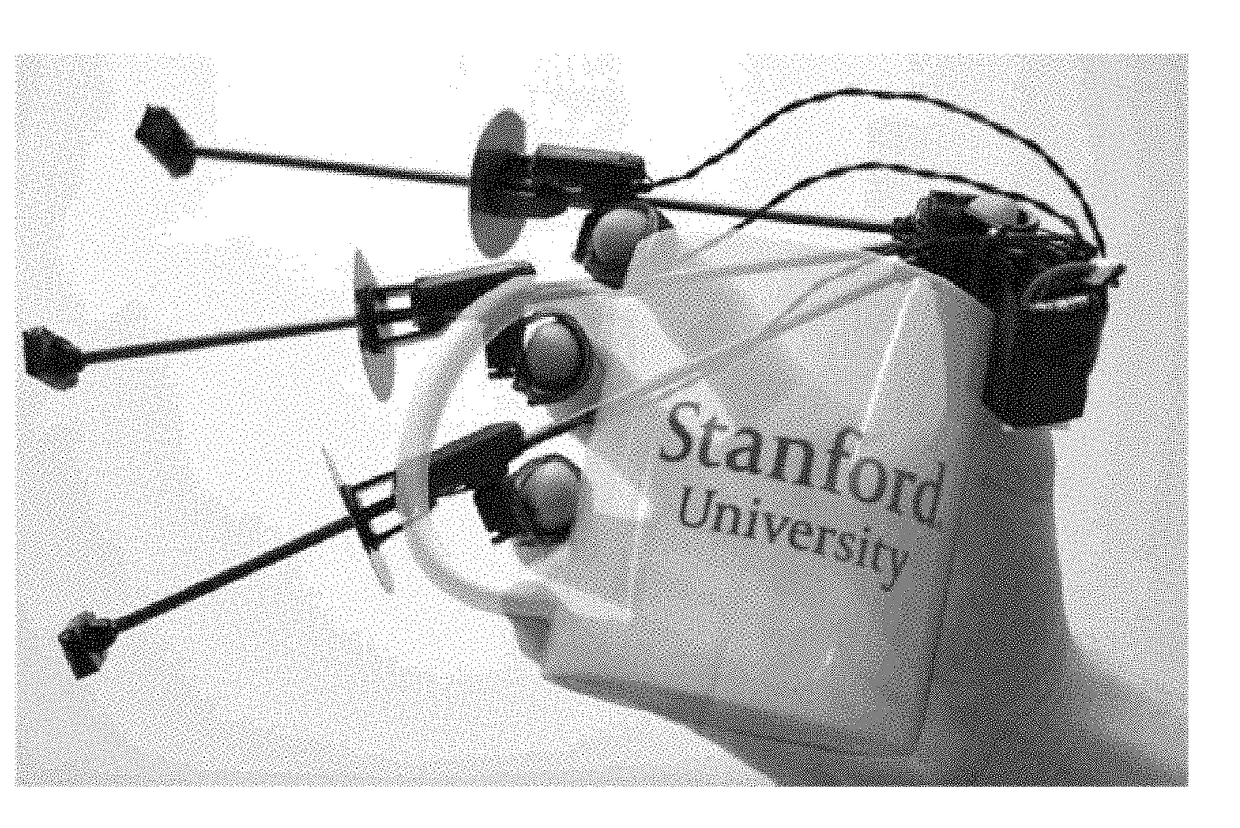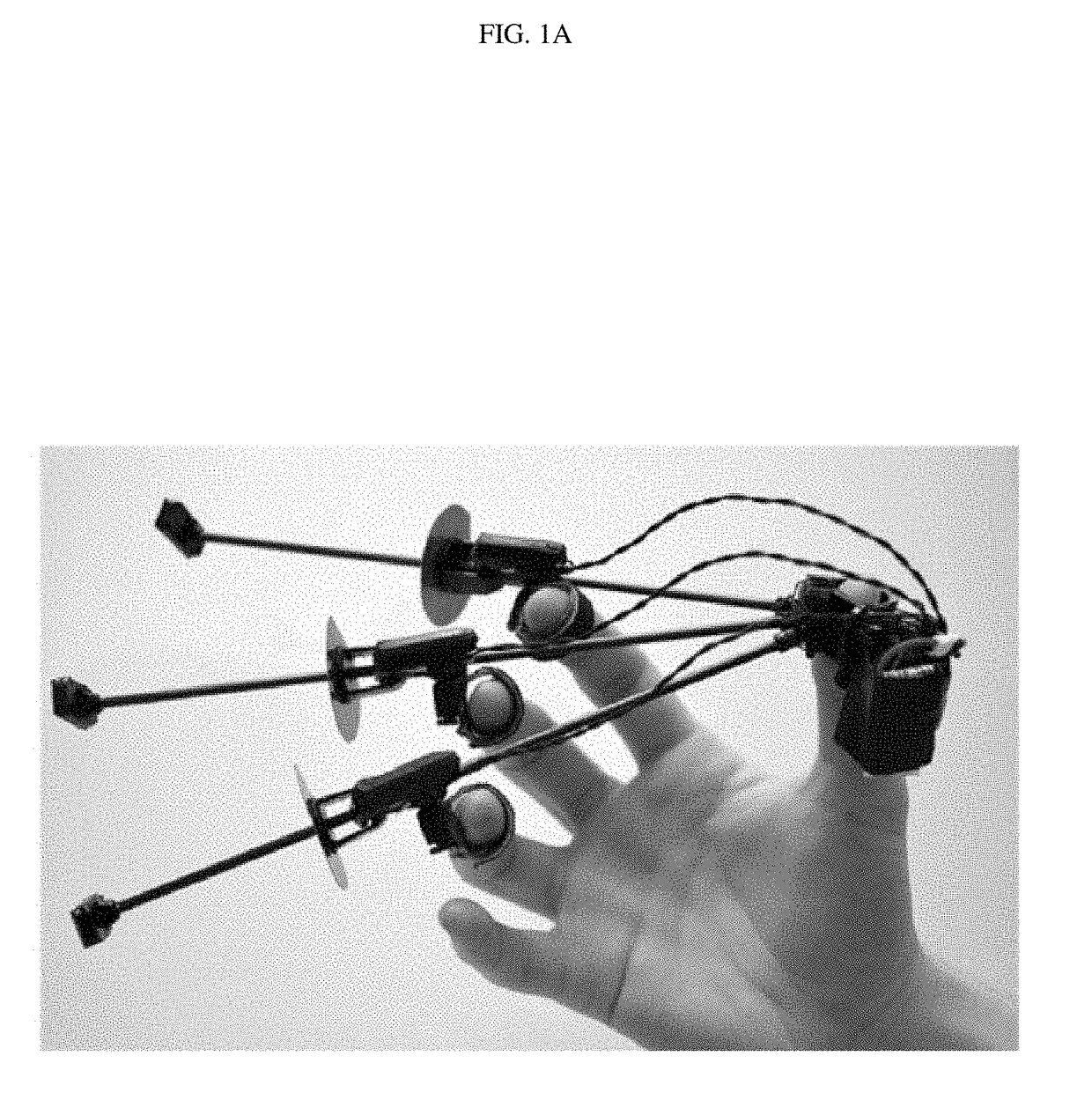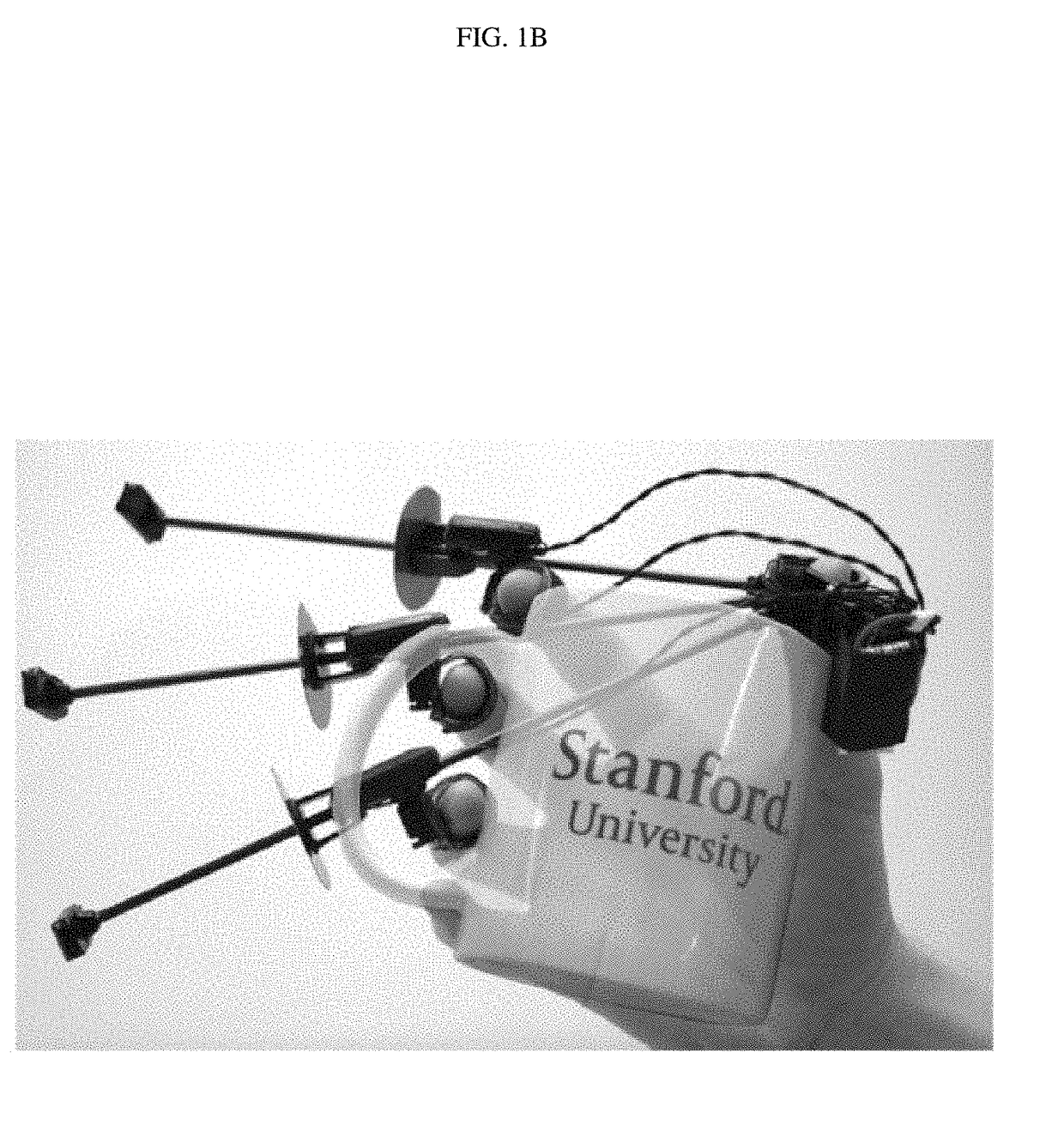Wolverine: a wearable haptic interface for grasping in virtual reality
a virtual reality and haptic interface technology, applied in the field of wearable haptic interfaces for grasping in virtual reality, can solve the problems of existing gestural input styles and limitations of user input devices
- Summary
- Abstract
- Description
- Claims
- Application Information
AI Technical Summary
Benefits of technology
Problems solved by technology
Method used
Image
Examples
example 1
Performance Analysis Based on Actuation Speed
[0083]To decide the voltage for actuation, the dc motor was powered with different voltages. As shown in FIG. 6, higher voltages made faster responses. Also, the variance of the actuation lag was reduced in higher voltages. This means a higher voltage can generate faster and more reliable motions for this system. However, repeated operation at 5 V resulted in damage to the gearbox. Therefore, for this system 3.7 V was chosen.
[0084]With 3.7 V, the average time to rotate the lever into the locked, or “in,” position was 21 ms. This actuation speed is less than the delay a human notices between visual and haptic stimuli (45 ms) [23], [24]. The actuation time could be further reduced by decreasing the angle through which the lever must rotate. However, this could decrease robustness, because the system is closer to jamming in the unlocked position; a small perturbation could result in undesired locking.
example 2
Performance Analysis Based on Force Analysis
[0085]To characterize its stiffness and maximum force, a set of actuation parts was mounted to Instron MicroTester 5848 and measured the compression force with the brake engaged. The force-displacement curve in FIG. 7 shows the stiffness during braking is 162 N / mm. The maximum force before slipping is 106 N. The brake force is a frictional force between the carbon fiber rod and an aluminum flat washer affixed to the lever.
example 3
Performance Analysis Based on Sensor Noise Analysis
[0086]FIG. 8 shows the one standard deviation noise magnitude as a function of displacement from the sensor to the back of the finger for 3 different reflector designs. It is noted that for small distances, less than roughly 50 mm, all reflectors are fully within the field of view and so have comparable noise performance—likely determined by characteristics of the sensor and the material of the reflector. However, after a displacement of about 50 mm, the noise begins to diverge for the smaller disks. The 37 mm disk size was found to be the largest size possible that did not interfere with the grasp mechanics.
PUM
 Login to View More
Login to View More Abstract
Description
Claims
Application Information
 Login to View More
Login to View More - R&D
- Intellectual Property
- Life Sciences
- Materials
- Tech Scout
- Unparalleled Data Quality
- Higher Quality Content
- 60% Fewer Hallucinations
Browse by: Latest US Patents, China's latest patents, Technical Efficacy Thesaurus, Application Domain, Technology Topic, Popular Technical Reports.
© 2025 PatSnap. All rights reserved.Legal|Privacy policy|Modern Slavery Act Transparency Statement|Sitemap|About US| Contact US: help@patsnap.com



